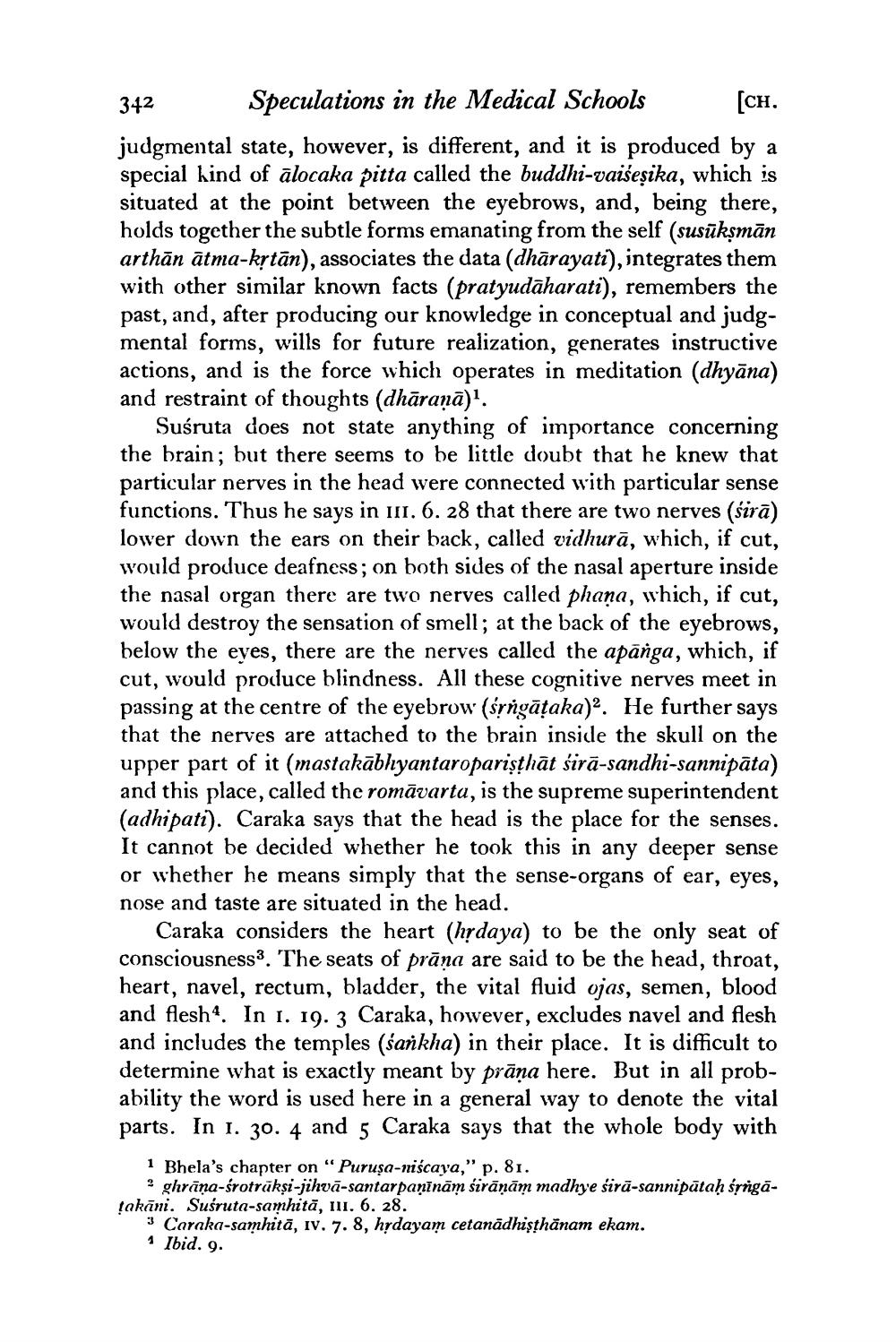________________
342 Speculations in the Medical Schools [CH. judgmental state, however, is different, and it is produced by a special kind of alocaka pitta called the buddhi-vaiseșika, which is situated at the point between the eyebrows, and, being there, holds together the subtle forms emanating from the self (susūksmān arthān ātma-kstān), associates the data (dhārayati), integrates them with other similar known facts (pratyudāharati), remembers the past, and, after producing our knowledge in conceptual and judgmental forms, wills for future realization, generates instructive actions, and is the force which operates in meditation (dhyāna) and restraint of thoughts (dhāraņā)".
Suśruta does not state anything of importance concerning the brain; but there seems to be little doubt that he knew that particular nerves in the head were connected with particular sense functions. Thus he says in 111. 6. 28 that there are two nerves (sirā) lower down the ears on their back, called vidhurā, which, if cut, would produce deafness; on both sides of the nasal aperture inside the nasal organ there are two nerves called phana, which, if cut, would destroy the sensation of smell; at the back of the eyebrows, below the eves, there are the nerves called the apānga, which, if cut, would produce blindness. All these cognitive nerves meet in passing at the centre of the eyebrow (śrngāțaka)?. He further says that the nerves are attached to the brain inside the skull on the upper part of it (mastakābhyantaroparişthāt širā-sandhi-sannipāta) and this place, called the romāvarta, is the supreme superintendent (adhipati). Caraka says that the head is the place for the senses. It cannot be decided whether he took this in any deeper sense or whether he means simply that the sense-organs of ear, eyes, nose and taste are situated in the head.
Caraka considers the heart (hırdaya) to be the only seat of consciousness. The seats of prāņa are said to be the head, throat, heart, navel, rectum, bladder, the vital fluid ojas, semen, blood and flesh. In 1. 19. 3 Caraka, however, excludes navel and flesh and includes the temples (sankha) in their place. It is difficult to determine what is exactly meant by prāṇa here. But in all probability the word is used here in a general way to denote the vital parts. In 1. 30. 4 and 5 Caraka says that the whole body with
1 Bhela's chapter on "Puruşa-niscaya," p. 81.
2 ghrāna-śrotrūkşi-jihvā-santarpaņīnām sirāņām madhye sirā-sannipātaḥ śrngafakāni. Suśruta-samhitā, III. 6. 28.
3 Caraka-samhitā, iv. 7. 8, hrdayam cetanadhisthānam ekam. 1 Ibid. 9.




